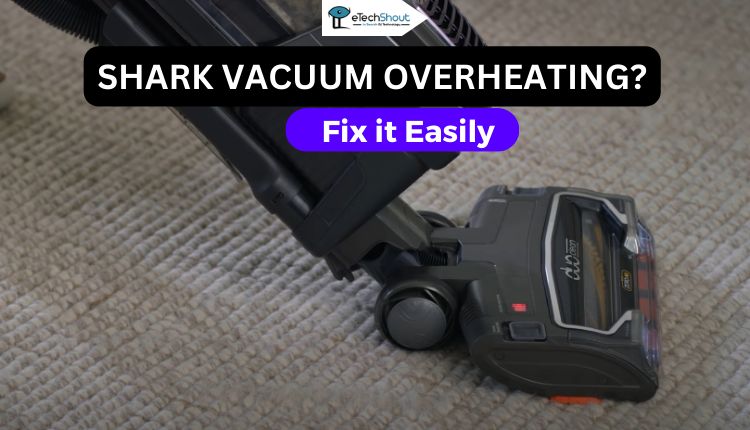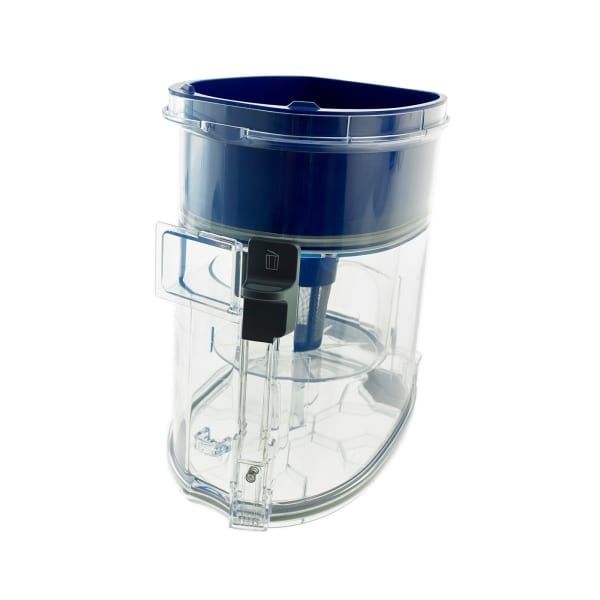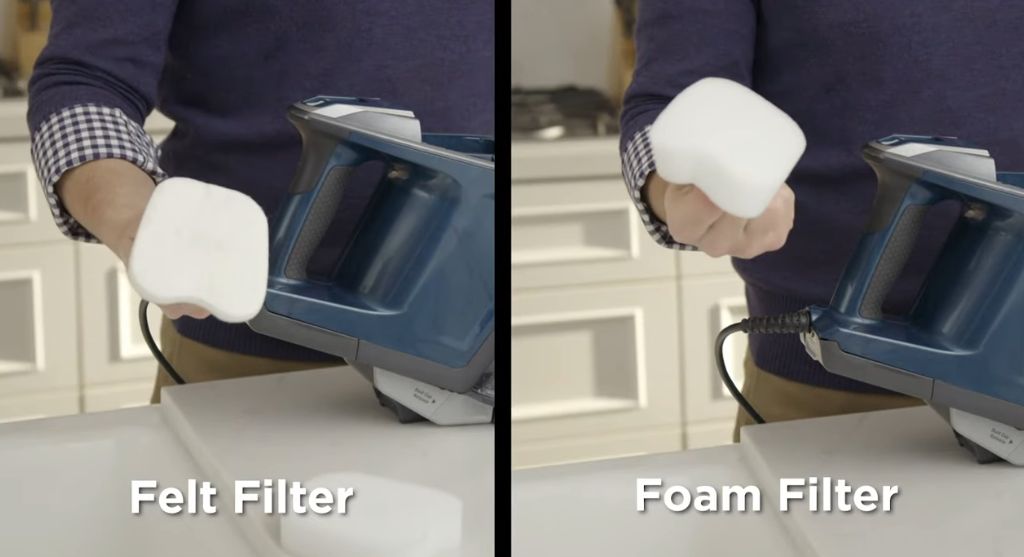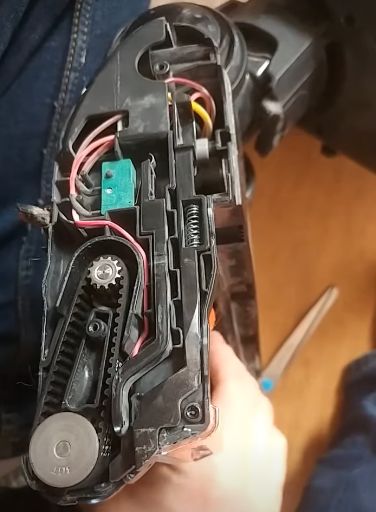
Is your Shark vacuum overheating and making things messy at home? If you have furry friends or a lot of dust at home, we understand the struggle. But don’t worry, we’ve got you covered with some simple solutions to fix your overheating Shark vacuum. In this article, we’ll explore why your vacuum might be overheating and provide easy-to-follow fixes that anyone can do.
Shark vacuums are a top pick for pet owners, especially those with spacious carpeted areas where their furry companions enjoy their playtime. Nevertheless, when your vacuum starts overheating, it can lead to a less-than-clean and potentially hazardous home environment.
However, even these well-liked vacuums can sometimes have problems, like getting too hot. But don’t worry! If your Shark vacuum is overheating, just follow the steps in this guide, and we’ll help you fix it.
In this post, you’ll find out why your Shark vacuum is overheating and learn how to make it stop overheating, as well as a few other useful tips! We recently shared a Shark Vacuum brush roll indicator light troubleshooting guide.
Why Does My Shark Vacuum Keep Overheating?
Your Shark vacuum may overheat for several reasons, such as having a full dust cup, a blocked hose, or debris stuck in the brush roll. It can also occur because of dirty filters, a broken belt, or electrical problems. When your Shark vacuum overheats, its internal thermostat usually shuts off the motor to prevent more damage.
How to Fix a Shark Vacuum That Overheats?
Empty the Dust Cup

Some Shark vacuum models, like the Shark Apex Uplight Corded Lift-Away, come with a handy “Max Fill” marker on the dust cup. This marker helps you know precisely when the dust cup is full and should be emptied immediately to prevent a loss of suction or even overheating.
In specific models like the Shark Apex Uplight Corded Lift-Away, the dust cup features a “double lid” design, which means you’ll need to empty it from both sides.
You’ll know it’s time to empty your Shark vacuum’s dust cup when you observe:
- A decrease in suction power.
- Debris being left behind as you vacuum.
- For improved performance and to avoid these issues, it’s a good practice to empty your vacuum’s dust cup after each use or when it reaches no more than ¾ full.
Clogged Filter
 A common reason for your overheating Shark vacuum is a clogged filter. The filter’s job is to capture dirt and debris, but over time, it can get blocked.
A common reason for your overheating Shark vacuum is a clogged filter. The filter’s job is to capture dirt and debris, but over time, it can get blocked.
This blockage makes the vacuum’s motor work harder to pick up dirt, leading to overheating.
To resolve this issue, you’ll want to clean or replace the filter. To clean it, simply take the filter out of the vacuum and rinse it with warm water. Before vacuuming it again, let it completely dry.
In order to prevent clogging, replace the filter every few months, and more often during heavy usage periods. This will help your Shark vacuum work efficiently and avoid overheating problems.
Impermeable HEPA Filter
A HEPA filter in your vacuum is meant to capture very tiny particles. If it gets all stuffed up, it can stop air from moving, and your vacuum might get too hot.
If your getting Shark vacuum overheated frequently, it’s probably because the HEPA filter isn’t letting enough air through. This can happen if the filter isn’t in its place properly or if it’s full of stuff.
In order to resolve it, first, check if the filter is in its place properly. Make sure it’s clean by taking it out and cleaning it. It is recommended that you replace your dirty filter with a new one if it is clogged with dirt.
For HEPA filter cleaning, take it out of the vacuum. Then, use a soft brush to gently get rid of any dirt or stuff on the filter’s surface. After that, wash the filter with warm water and let it dry completely before placing the filter back in the vacuum.
Replace the Belt
 Replacing the belt in your Shark vacuum can help prevent overheating problems. The vacuum belt is an important component for making the brush roller spin and collecting debris on your carpets.
Replacing the belt in your Shark vacuum can help prevent overheating problems. The vacuum belt is an important component for making the brush roller spin and collecting debris on your carpets.
When the belt is broken, it can put extra load on the motor, which can lead to your Shark vacuum overheating. Usually, a belt breaks because of large debris clogging the brush, causing too much resistance on the belt.
To fix this issue, consult your Shark manual to locate the belt in your vacuum. Check the belt and replace it if necessary, ensuring that you purchase the right belt for your specific Shark vacuum model.
Replace the Power Cord
A damaged power cord can lead to overheating in your Shark vacuum. The solution to this is to carefully check the entire cord for visible damage, including fraying, exposed wires, or cracks in the insulation. If you spot any problems, stop using the vacuum immediately to prevent safety hazards.
If you or someone you trust is experienced in electrical repairs, replacing the power cord is an option. Refer to your Shark vacuum’s manual for instructions, ensure you have the right replacement cord, and follow the manual carefully. However, if you’re uncertain or lack the skills, it’s safer to seek professional help from a technician or a Shark service center that can ensure the replacement is done correctly.
Check the Cooling Fan
If you suspect that your Shark vacuum is overheating due to a dirty or malfunctioning cooling fan, it’s advisable to seek professional assistance.
A dirty or damaged cooling fan may not be able to effectively remove excess heat from your Shark vacuum. If your machine is still within its warranty period, it’s recommended that you contact Shark’s customer support and arrange for a professional inspection of the cooling fan.
Alternatively, you can contact an independent vacuum repair shop or technician with expertise in Shark vacuums. In case of cooling fan issues, they will be able to assess and resolve them.
Inspect the Motor
If you suspect a problem with the motor in your Shark vacuum, it’s essential to take caution.
But, replacing a broken motor yourself can be risky, so it’s best to contact a professional to inspect your Shark vacuum.
Before contacting your local technician, check when you bought your vacuum. It might still be under warranty. Shark provides different warranties depending on the product type. For example, Shark 2-in-1 Vacuum and Mop Robot vacuums include a 3-year VIP warranty, which means they’ll repair or replace it for free if it fails. Shark Vertex Upright vacuums have a 5-year limited warranty.
You can find out your vacuum’s warranty by checking your receipt or visiting Shark’s warranty page.
If your vacuum is within warranty and experiencing motor issues, contact Shark’s customer support to inquire about repair or replacement options. They can guide you through the process to make sure your vacuum is repaired correctly.
Being aware of how to handle a Shark vacuum overheating problem could save you a considerable amount of money in potential repairs!
If the above troubleshooting methods don’t resolve the Shark vacuum overheating problem, it’s advisable to take your vacuum to a qualified technician or return it to the place of purchase for further assistance. In addition to diagnosing the issue, they can also solve it in a safe and efficient manner.









